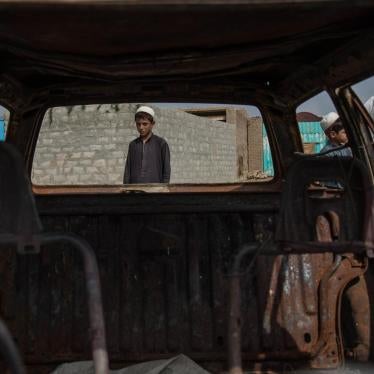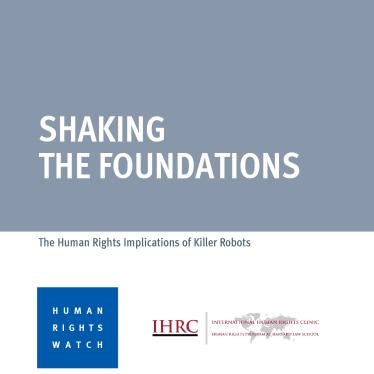Far-reaching legislation introduced on February 14 to protect civilians from the deadly effects of cluster munitions deserves strong support, Human Rights Watch said today. The Cluster Munitions Civilian Protection Act, sponsored by Senators Dianne Feinstein and Patrick Leahy, would prohibit the use of cluster munitions in populated areas and prohibit the use and transfer of cluster munitions with submunitions that have a failure rate of 1 percent or more.
The bill was introduced a week before the launch of an international process to create a treaty banning cluster munitions that cause unacceptable humanitarian harm.
“This landmark legislation would put the US at the forefront of global efforts to eliminate weapons that have killed and maimed thousands of civilians,” said Steve Goose, director of the arms division at Human Rights Watch. “At the moment, the US is best known as one of the most prolific users, producers, exporters and stockpilers of the weapon.”
Cluster munitions, containing dozens or hundreds of small explosive submunitions, are typically dropped from aircraft or fired from artillery or rocket systems. They are particularly objectionable weapons because they pose a double danger to civilians: there is an immediate danger during attacks due to their inaccuracy and wide dispersal pattern, and a long-term danger after conflict, because so many duds are left lying around that, like landmines, can explode years later.
The US has a stockpile of millions of cluster munitions that contain between 720 million and 1 billion submunitions. Only around 30,000 of those submunitions have safety features that might bring the failure rate below 1 percent. The acknowledged failure rate for some of the others is more than 20 percent.
“The US has a staggering number of submunitions in its arsenal – perhaps 1 billion – that are highly unreliable and should never be used,” said Goose.
Under existing US policy, which was approved in 2001 and took effect in fiscal year 2005, all newly produced submunitions must have a failure rate of less than 1 percent. But there is no restriction on the use, sale or transfer of the existing stock of dangerous, outdated weapons.
“The US should have the same standard for its old submunitions as it does for its new ones,” said Goose. “The current double standard amounts to an unconscionable acceptance of excessive and avoidable civilian casualties.”
The United States used about 2 million submunitions in Iraq in 2003, some 248,000 in Afghanistan in 2001 and 2002, and another 295,000 on Kosovo in 1999. Cluster munitions caused more civilian casualties during the armed conflicts in Kosovo and Iraq than any other weapon – apart from small arms – primarily because US forces used them against enemy forces in populated areas.
The United States used cluster munitions with tens of millions of submunitions in Iraq, Kuwait and Saudi Arabia during the 1991 Gulf War, causing thousands of civilian casualties in the post-war period. The United States also used cluster munitions in Laos, Vietnam and Cambodia in the 1960s and 1970s, and the deadly leftovers continue to take lives and limbs on a regular basis decades later.
The United States has exported cluster munitions to at least two dozen countries, including: Argentina, Australia, Bahrain, Belgium, Canada, Egypt, Denmark, France, Greece, Indonesia, Israel, Italy, Japan, Jordan, South Korea, Netherlands, Norway, Oman, Pakistan, Saudi Arabia, Spain, Turkey, United Arab Emirates, and the United Kingdom.
On the international front, there is great momentum in the battle against cluster munitions. Most notably, Norway is leading a process aimed at development of a new international treaty that would prohibit cluster munitions that cause unacceptable humanitarian harm. Norway will host the first meeting of the process on February 22-23, 2007. In recent months, some three dozen countries have formally declared their support for a new treaty on cluster munitions, as have the International Committee of the Red Cross and many UN agencies.
The Cluster Munitions Civilian Protection Act of 2007 would prevent any funds from being spent to use, sell, or transfer any cluster munitions unless: (1) the submunitions of the cluster munitions have a 99 percent or higher functioning rate, and (2) a policy is in place prohibiting use in areas where civilians are known to be present or in areas normally inhabited by civilians.
The bill contains a presidential waiver provision that would allow use of submunitions with a failure rate greater than 1 percent if the president certifies that it is vital to protect the security of the United States.
“It is difficult to conjure up a situation in which the security of the United States would depend on the use of cluster munitions with known high failure rates,” said Goose. “The US is no safer when it knowingly puts civilians at high risk during combat operations.”






